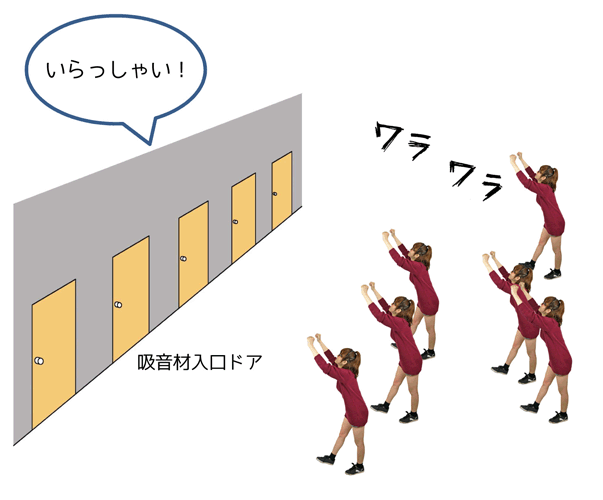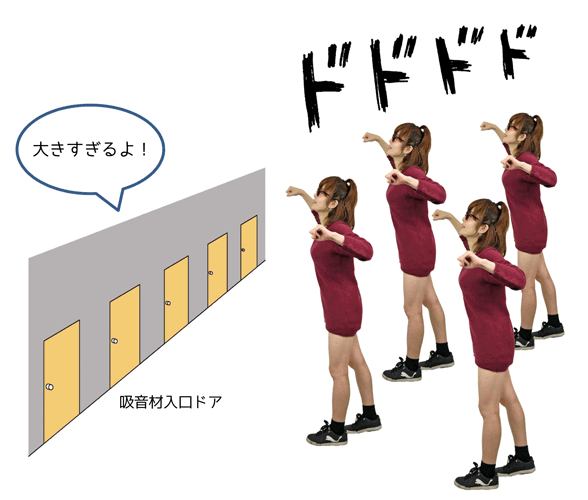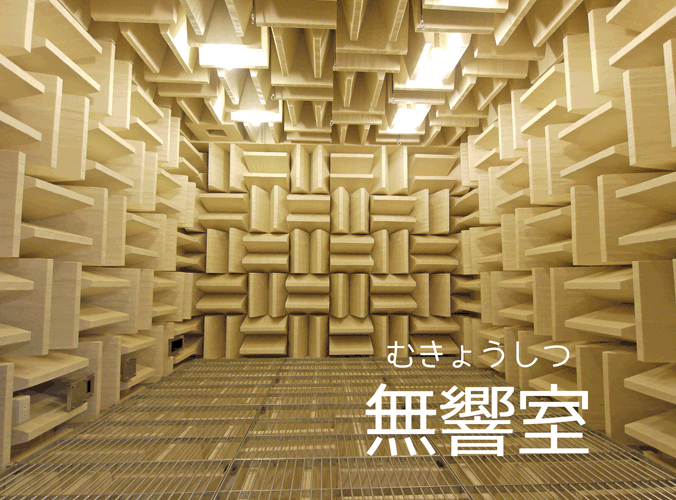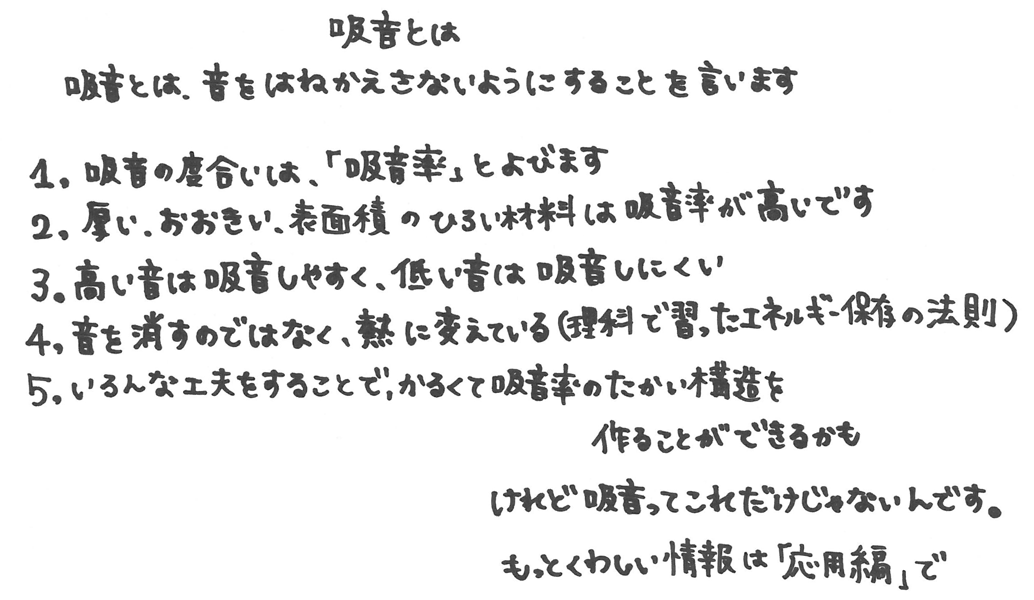02. What is Sound Absorption? Basics
Sound absorption means “absorbing sound,” but it actually refers to converting sound energy into heat energy. However, it doesn’t generate any noticeable warmth, so you can safely touch sound-absorbing materials. The degree of sound absorption is called the “absorption rate.” While sound insulation reflects sound, sound absorption does the opposite by preventing sound from bouncing back. If you throw a ball at a sound-absorbing material and it doesn’t bounce back, it has a high absorption rate. Materials like blankets or sponges are good examples—most sound-absorbing materials are soft and fluffy.

However, no matter how fluffy it is, sound-absorbing material won’t be effective unless air (and thus sound) can enter it. If you wrap a blanket in a plastic bag, the plastic becomes a soundproof barrier, preventing sound from being absorbed by the blanket. Sound-absorbing materials act like a maze that sound waves can enter but can’t escape from easily. If you look closely at a blanket, it’s full of intertwined fibers or feathers, creating countless tiny rooms. Each room has an entrance and exit, and sound gets trapped in this maze of small spaces, increasing absorption as it gets “lost.”

Sound-absorbing materials often have irregular shapes, like bumps or triangles, to increase the surface area and make it easier for sound to enter. This is why thicker, larger, and more textured sound-absorbing materials tend to have a higher absorption rate. However, low frequencies are more difficult to absorb than high frequencies. Think of it like this: high frequencies are like tiny people, while low frequencies are like giants. The giants have a harder time fitting into the small rooms.


Dead and Live Spaces
Have you heard of an anechoic room? It’s a room filled with sound-absorbing materials, so no sound reflects back. Being inside feels strange since it’s completely different from the everyday world. Singing in an anechoic room feels disappointing because there’s no echo, making your voice sound thin and unenhanced.

Spaces like this, with heavy sound absorption, are called dead spaces. Conversely, echoing spaces like bathrooms, where sound isn’t absorbed, are called live spaces. Singing in a bathroom often sounds better because of the echo. Musicians and sound engineers adjust the amount and placement of sound-absorbing materials in a room to find the right balance between dead and live space for their needs, a process called acoustic tuning.
Summary:

